
ullstein bild via Getty Images
- In March 1954, French troops were in northern Vietnam for what commanders thought would be a decisive blow against the Viet Minh.
- By May, after weeks of brutal fighting, French forces surrendered, ending the battle of Dien Bien Phu and the French Indochina War.
- Western countries saw that war as essential to stopping the spread of communism, and the US was willing to take extreme action to win.
- See more stories on Insider's business page.
On March 13, 1954, 200 Viet Minh artillery pieces began a massive bombardment of the French garrison at Dien Bien Phu in northern Vietnam.
The French had been preparing for an attack for some time, but the scale of the bombardment was much larger than they had thought possible.
Within a few hours, the situation was extremely dire. Some 49,000 Viet Minh stormed the garrison's outer strong points in human-wave attacks. The airstrip was under constant fire, and French counter-battery fire, meant to eliminate Viet Minh artillery, was hopelessly ineffective, with many French guns destroyed.
It was the beginning of a brutal 55-day siege that was the climax of the French War in Indochina, which Western countries saw as just as essential to stopping the spread of communism as the Korean War.
US support in the battle was covert but extensive. CIA-employed pilots flew vital resupply missions, while US Air Force personnel maintained the fleet of aircraft that the US had loaned to France.
As the battle unfolded, American officials debated direct involvement. According to some accounts, US officials even offered France nuclear weapons to help turn the tide.
A plan for a decisive battle
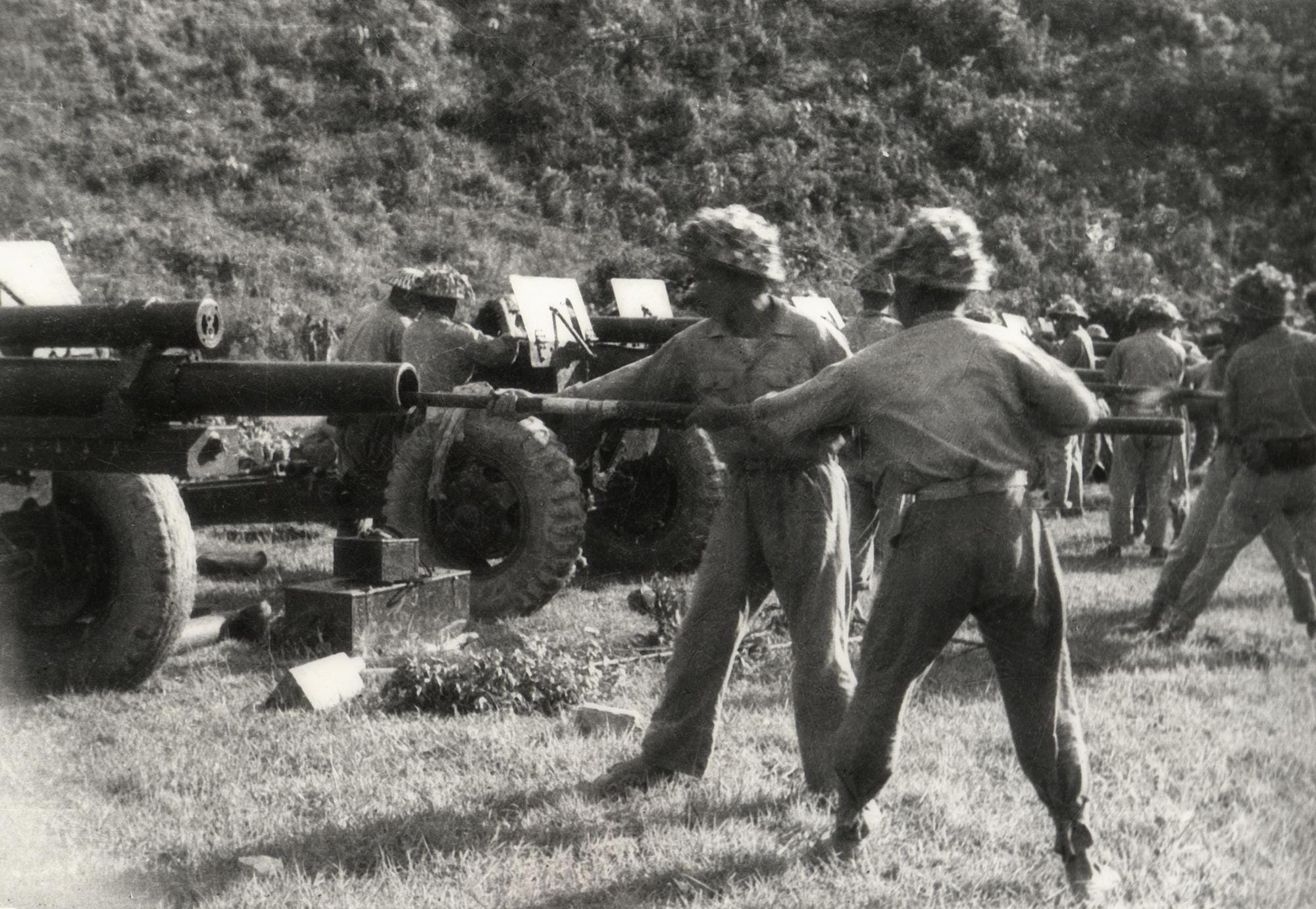
AFP/AFP via Getty Images
A year before the battle, the Viet Minh, led by Ho Chi Minh, had seized virtually all of northern Vietnam, with the exception of the area around Hanoi.
The Viet Minh also controlled territory in Laos and Cambodia. Fearing a larger Viet Minh offensive into Laos, French generals planned to build a base along the border to cut off the Viet Minh and draw its fighters onto open ground, where they could be destroyed by artillery and airpower.
A flat valley nestled between mountains, Dien Bien Phu was selected for its open fields of fire. On November 20, 1953, French paratroopers and engineers parachuted into the valley and began constructing defensive positions.
The fortifications were made up of eight main strong points over a roughly 6-mile area from north to south. The over 10,000-man garrison was a made up of French soldiers, Foreign Legionnaires, and colonial troops from North Africa and Indochina.
But the French neglected to seize the surrounding high ground. The French artillery commander was confident in French counter-battery capabilities and believed the Viet Minh would be unable to muster heavy artillery in the area. He even boasted that "I've got more guns than I need."
He was sorely mistaken. The Viet Minh had spent months moving artillery and ammunition into the mountains by foot. By March 1954, they were dug in, well camouflaged, and surrounding the French.
Stemming the 'red tide'
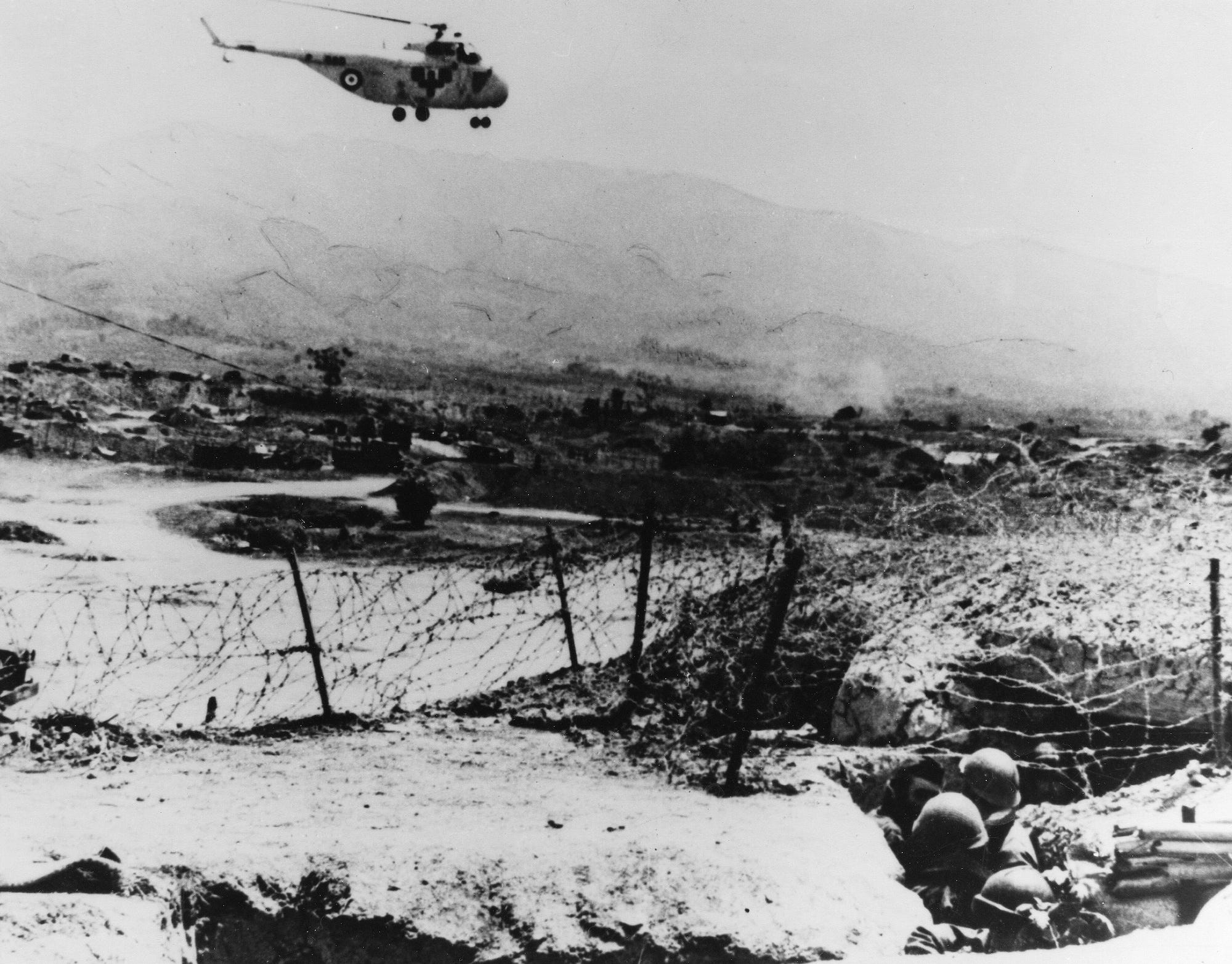
ullstein bild via Getty Images
In the first four days of battle, three of the nine French strong points were lost and over 1,000 French soldiers were killed or wounded, including the Foreign Legion commander and the artillery commander, who killed himself with a grenade out of shame over his miscalculations.
Soon, French reinforcements and supplies could only be parachuted in, but airdrops became riskier as the siege continued. Multiple planes were shot down, and many supplies fell into Viet Minh hands.
By May, the Viet Minh had taken the airstrip and reduced the French to just two strong points.
Dien Bien Phu became the center of the fight against communism. One press report described it as "a human dam trying to stem the red tide that threatens to engulf Southeast Asia."
The French were desperate and appealed to the US for help.
The US had been involved in Indochina since the latter days of World War II and had supported the French war effort since 1950. The support was largely logistical; hundreds of planes, tanks, vehicles, and thousands of tons of munitions were given to the French, and American advisors oversaw many assistance efforts.
By 1954, close to 80% of France's war expenses were being paid by the US government, and US Air Force personnel were stationed in Indochina to help maintain and arm aircraft on loan from the US.
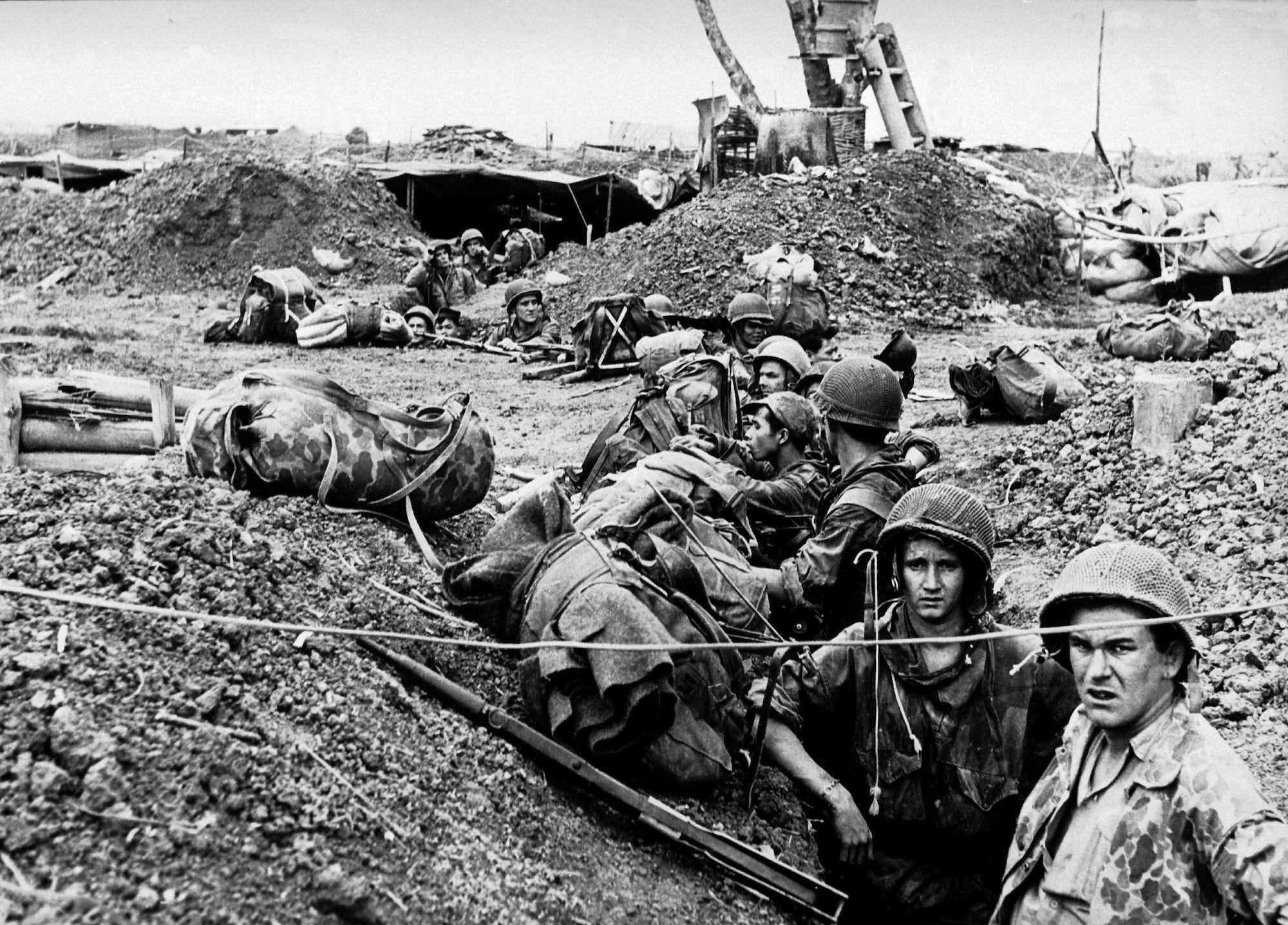
Keystone-France/Gamma-Keystone via Getty Images
At Dien Bien Phu, American pilots from Civil Air Transport, a CIA-owned airline, flew over 1,300 sorties in loaned C-119 transport aircraft with French Air Force insignia hastily painted over US markings.
Two pilots, James McGovern Jr. and Wallace Buford, were killed when their C-119 was shot down - the first Americans to die in combat in Vietnam.
French military officials and diplomats repeatedly requested direct action by the US.
One plan, discussed on March 20 and later named Operation Vulture, would have seen between 60 and 98 US Air Force B-29 bombers and over 100 Navy escort aircraft from US aircraft carriers bomb Viet Minh positions at Dien Bien Phu. One version of Operation Vulture even included dropping three atomic bombs.
The French formally requested a B-29 strike on April 4, but President Dwight Eisenhower, having just ended the Korean War and worried about China's response, was reluctant to get involved directly without support from allies, namely Britain, or Congress.
The French requested the transfer of up to 20 B-29s so they could carry out larger bombing missions themselves. This too was denied, but the debate among senior US officials about nuclear weapons at Dien Bien Phu was not over, and Air Force personnel were on notice for Operation Vulture, just in case.
'We might give them a few'
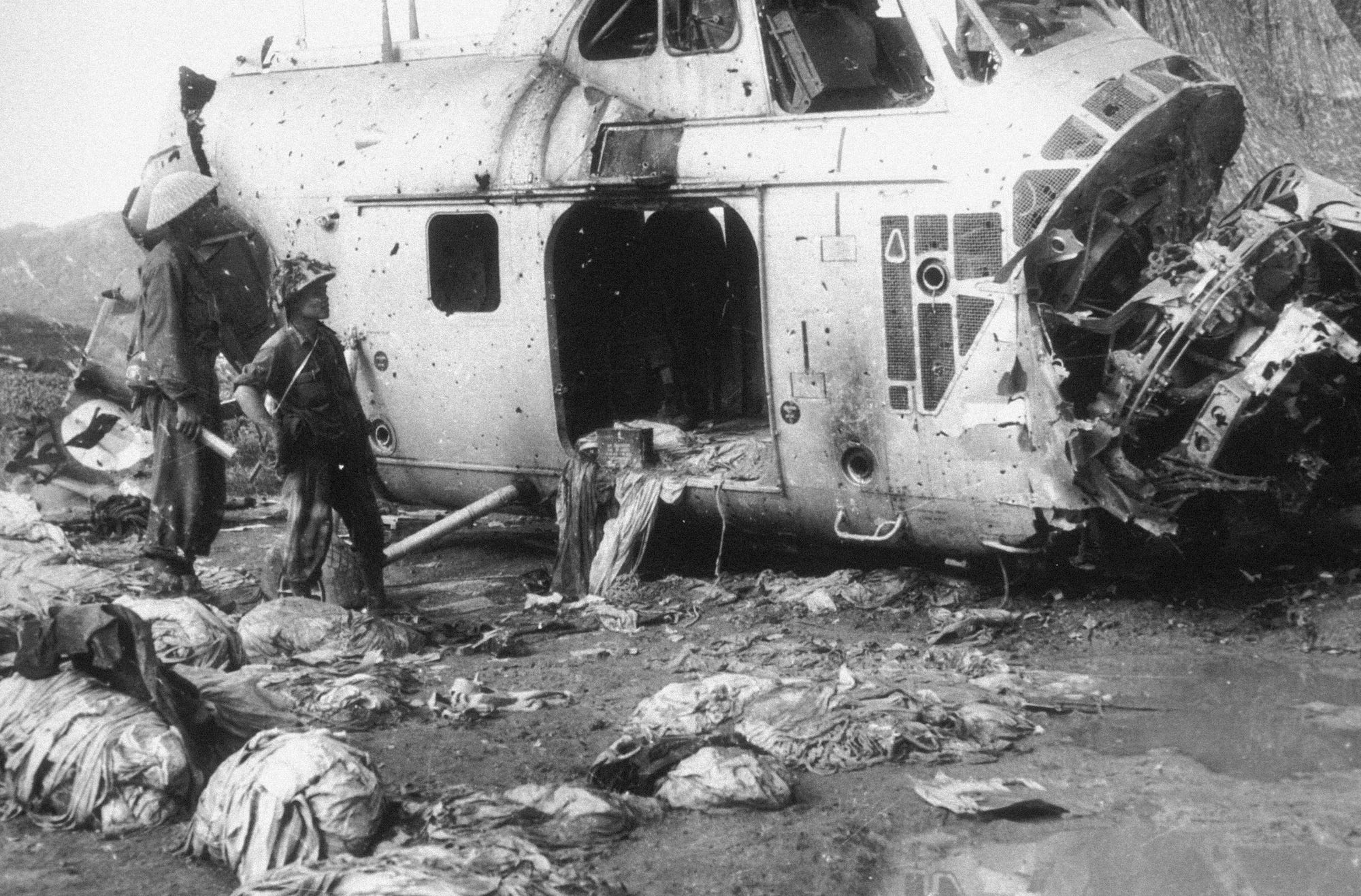
Collection Jean-Claude LABBE/Gamma-Rapho via Getty Images
French Foreign Minister Georges Bidault claimed that during an April 22 meeting in Paris, Secretary of State John Foster Dulles took him aside and offered the French two atomic bombs for use at Dien Bien Phu.
Bidault said that he refused the offer on the grounds that by then the Viet Minh were too close to the garrison and the bombs would wipe out the French as well.
Dulles later categorically denied making such an offer, and no British or American witnesses confirmed Bidault's claims. But internally the White House did discuss both using nuclear weapons and giving them to the French.
On April 29, the National Security Council debated the issue for four hours, and concluded on April 30 that, "we might give them a few."
But Eisenhower was still reluctant to engage directly without allied or Congressional support, neither of which was forthcoming.
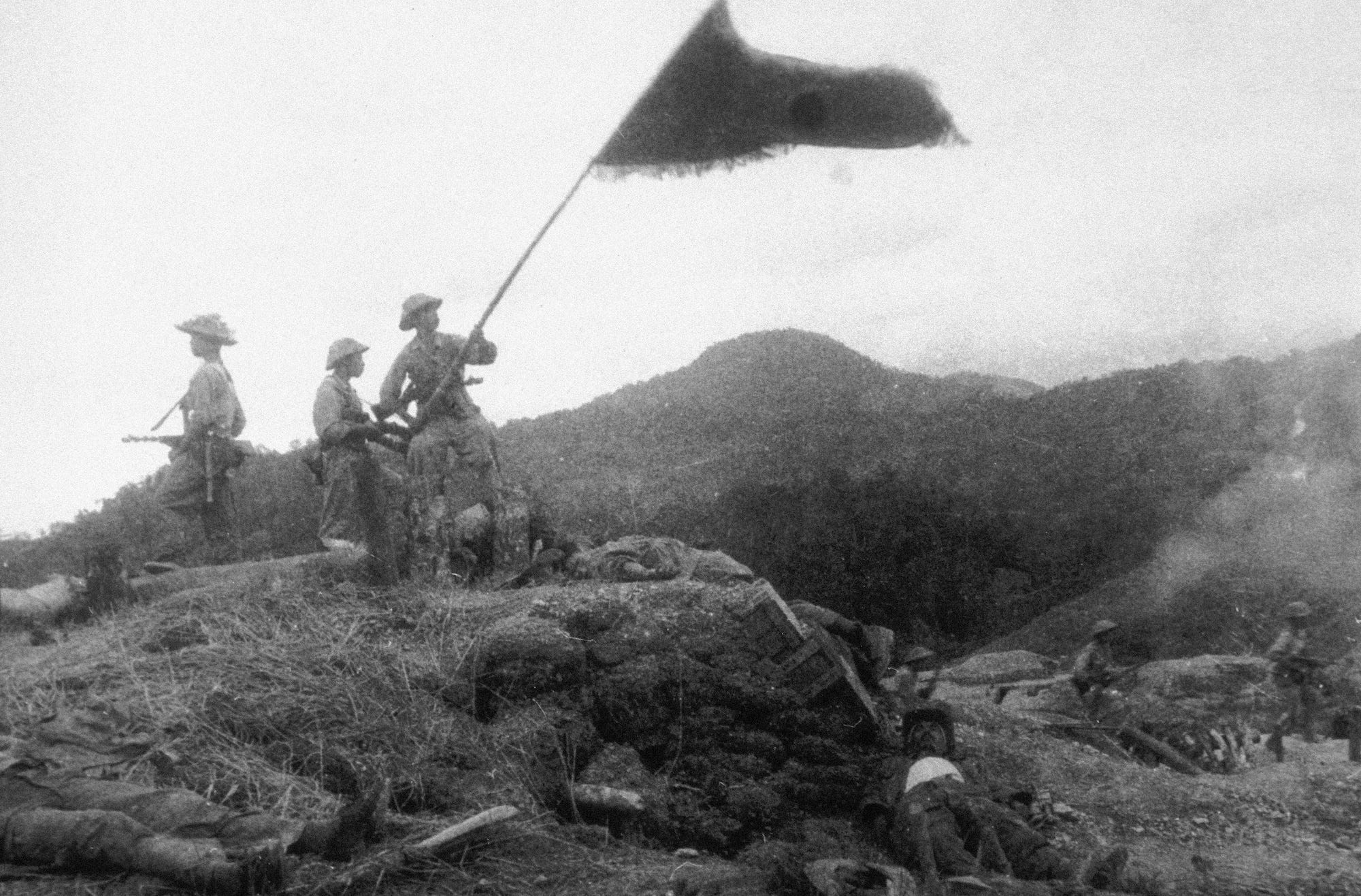
Collection Jean-Claude LABBE/Gamma-Rapho via Getty Images
By May, it was too late. The Viet Minh launched their final assault on May 1 and defeated the remnants of the French garrison by May 7.
Over 2,000 French soldiers were killed, and over 10,000 were wounded or captured. The Viet Minh suffered over 23,000 casualties.
A day after the Viet Minh victory, negotiations involving the French and the Viet Minh, as well as the US, China, the Soviet Union, and the UK, began in Geneva.
Indochina was cut into four countries; Vietnam was divided into the communist-controlled North and the Republic of Vietnam in the South, while Laos and Cambodia became independent states.
The US stepped in directly to help defend South Vietnam from communism in 1965. Lessons from the French experience at Dien Bien Phu helped the US fend off similar attack on Khe Sanh in 1968, where some US military officials also contemplated using nuclear weapons.